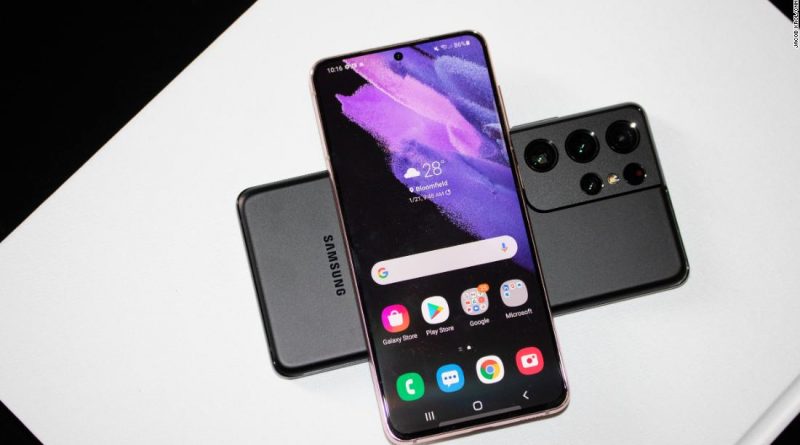Samsung Galaxy S21 & S21 Ultra review: Premium Android smartphones
(CNN) —
Samsung didn’t waste much time getting busy in 2021, already releasing its new line of Galaxy smartphones: the S21, S21+ and S21 Ultra.
They still sport Space Zoom like their predecessors, but you’ll now be future-proofed and ready for 5G out of the box, thanks to the latest processor from Qualcomm. The S21 (starting at $799.99) and S21+ (starting at $999.99) differ only in screen size — 6.2 inches and 6.7 inches, respectively. The 6.8-inch S21 Ultra (starting at $1,199.99), though, packs in additional memory while taking image capture to the extreme.
We’ve spent the past week with Galaxy S21 and S21 Ultra, and while there’s certainly plenty of overlap between the two, we found some clear differences.
Who these are for: Samsung’s Galaxy S21 is a premium Android smartphone that excels with a fast processor, excellent camera and long battery life. If you’re looking to upgrade, it should be near the top of your list. The Galaxy S21 Ultra succeeds as the do-it-all option, with an incredible display and impressive photography chops. If you want a premium smartphone that can stand up to anything and can stomach a $1,199 price, it deserves a look.
What you need to know: If you’re not looking for a nearly 7-inch phone but still want top-of-the-line 2021 features, the Galaxy S21 is really the complete package. A 6.2-inch screen is plenty for most, and it acts as a viewfinder for a wide, ultrawide and telephoto lens setup. And at $799, we’re confident the Snapdragon 888 processor inside will be zippy for many years to come. Comparatively, the S21 Ultra raises the bar with six cameras in total, including a wide 10x optical lens. It also stretches the screen to 6.8 inches while delivering a higher-resolution experience. And yes, it features 100x Space Zoom versus just 30x on the S21.
How they compare: Year over year, the S21 is a small upgrade over the S20 — a refreshed design, a newer processor and faster cameras. So if you own an S20, this is not an upgrade must, although Samsung’s trade-in deals do their best to persuade you otherwise. The S21 Ultra delivers a terrific 10x optical lens and is no longer hampered by some camera options, as was its predecessor, making for a much more uniform experience compared to the S20 Ultra. In short: It blows past the Note 20 Ultra and other premium Android phones. Both the S21 and S21 Ultra stand as class-leading smartphones that can go head-to-head with the iPhone 12 line, and surpass Google’s Pixel 5 with performance.
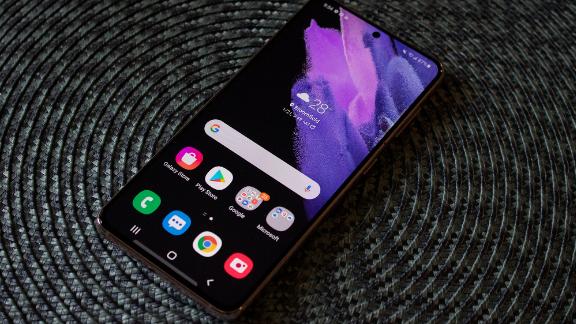
Samsung Galaxy S21 Ultra
PHOTO:
Jacob Krol/CNN
At $799, Samsung’s Galaxy S21 is the starting point for its flagship Galaxy S smartphones. With a 6.2-inch screen size and three cameras on the back, it’s looking mighty similar to the previous Galaxy S20 — but it’s $200 cheaper than its predecessor.
Updating the classic slab
The classic rectangular slab is now more streamlined. The metal frame of the Galaxy S21 no longer acts as the main hull of the phone but now extends to the camera bump. It’s a really nice aspect of the design, but it’s not all rainbows and sunshine.
While the front of the S21 is glass and the sides are metal, the back is plastic or polycarbonate, leading to a lighter feel (the S21 weighs only 171 grams). Samsung traded glass for plastic here, as it did on the S20 FE and Note 20. It’s not a deal breaker and doesn’t make the device feel super cheap, but it’s a notable difference. The Google Pixel 5, iPhone 12 Mini and iPhone 12 all feature higher-end materials at similar price points. Ultimately, it feels like a cost-saving measure from Samsung that really shouldn’t be a factor on a flagship smartphone. As a consumer spending nearly $800, we expect a device that mirrors that price point. It’s a light device, which makes sense because of the materials being used, but pairing metal with plastic feels like a mismatch here.
But that’s really our own qualm, and one that the color options make up for. In fact, we’re currently scribbling love notes to the Phantom Violet color. It’s a two-tone design with a gold metal frame and a light purple plastic back. It reminds us of supervillain Thanos, but more importantly it stands as a smashing color combination.
And the rest of the S21 is pretty clean. You’ll find antenna bands and microphones etched into the frame, while the power and volume rocker live on the right-hand side. The bottom of the device features a USB-C port sandwiched between a speaker and SIM card slot. It’s not a combo slot, since Samsung is killing off the microSD card slot. That means no expandable storage — so choose the internal storage capacity wisely.
Display

Samsung Galaxy S21 Ultra
PHOTO:
Jacob Krol/CNN
The Galaxy S21 features a modestly sized 6.2-inch display. Samsung has display chops, and it shows. Colors are consistently accurate, though vibrant when needed. Black points and contrast levels are seriously impressive here. These correlate to make even the most mundane things — like a Twitter timeline — pop, while the latest episode of “WandaVision” can really sparkle.
It’s not the highest panel that Samsung offers — the Galaxy S21 features a Full HD Plus Dynamic AMOLED 2X display. The screen is slightly higher than 1080p and is set in a taller aspect ratio. Even to a trained eye, that’s a sharp display with a 2400 x 1080 resolution. Its adaptive switch refresh rate — ranging from 48 Hz to 120 Hz — will intelligently adjust to conserve battery life, as constantly running at 120 Hz will quickly kill the battery.
Users have their pick between a vivid or natural screen mode. If you’ve been using Samsung Galaxys for a while, vivid is what you’ll be used to. It ups saturation and tends to lean on the warmer side for image reproduction. It’s different from natural, which doesn’t up these hues and is closely aligned with how an iPhone displays content. We prefer vivid on the S21, as it makes content a bit immersive.
Both S21s (like the S21 Ultra, which you can read more about below) feature a kickass fingerprint sensor in the display. It’s a serious improvement over any other in-screen unlocking method we’ve tested, surpassing the S20, S20 Ultra and Note 20 Ultra.
Now, technically, it’s a new optical fingerprint sensor from Qualcomm, and Samsung just opted to use it here. It’s much faster at adding a fingerprint, cutting the time in about half (and even more so if you’re coming from an S10). We also didn’t experience any missed scans, something that was very common on the S20 last year. It’s a fast and secure way to unlock your phone or authenticate a purchase. Best of all, you can use it while wearing a mask.
Cameras
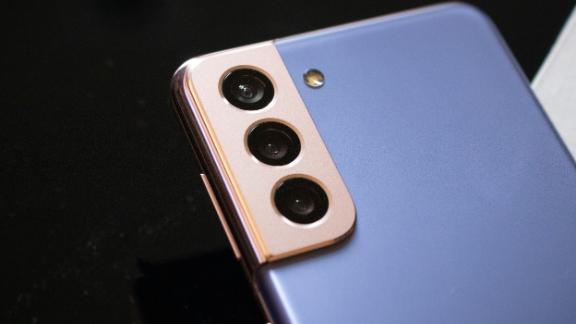
Samsung is continuing to push its imaging hardware with the S21. For the second year in a row, there are three cameras on the back. Truth be told, though, the 12-megapixel lenses don’t have many physical changes over those on the S20. The focus in 2021, instead, is on faster processing and new AI tricks as Samsung works to go head-to-head with Apple and Google.
The Galaxy S21 sports the following lenses:
- A 12-megapixel ultrawide lens: This is likely our favorite lens after a week of use, thanks to its 120-degree view of the world. Bigger isn’t always better, but when capturing epic shots, it’s the way to go. It’s an identical 12-megapixel lens to last year, but it’s on par with competitors and captures many details.
- A 12-megapixel wide lens: When you open up the camera, it presents the primary 12-megapixel wide lens. It’s handy for simple shots of multiple objects or people alike.
- A 64-megapixel telephoto lens: Space Zoom is, of course, in full force on the S21, and this 64-megapixel telephoto powers the experience. Physically, it has a 3x optical lens, and Space Zoom is a hybrid zoom onto this maximum zoom. It’s improved with AI stabilization, and the result is generally a clearer picture.
And here’s the good news: The slow shutter speeds that we called out on the S20 are almost fixed here. You can easily switch between the lenses and capture rapid burst shots. Even using 30x Space Zoom, it’s just faster all around.
Image quality is still quite sharp at un-zoomed levels, essentially when you’re just shooting from wide or ultrawide. Colors still skew a little more vibrant than the middle-of-the-road iPhone or cooler Google Pixel shots. Details are packed in, especially with the 12-megapixel wide and ultrawide lenses.
Opting to use Space Zoom is when blur and grain quickly come into play. It’s improved since last year, but you’re still trading details and clarity for a cool shot. For most zoom scenarios, we’d strongly recommend opting to stick within the 3x optical lenses reach. That’s what the actual lens can physically zoom to, and after that, you’re digitally zooming in on the shot. Samsung is also using some upscaling methods to improve the quality.
Samsung is really pushing Single Take on its 2021 lineup. Essentially, with this, you hit the shutter and can freely move around the S21 or S21 Ultra to capture content. The phone will intelligently capture stills, burst shots and even video. Year over year, it’s faster to process the files at the end. And Samsung is getting better at capturing the right shots and varying them up. You might be left with a few portraits, some stills with different effects, a time lapse and a normal video file.
Another mode we really liked was Director’s View, in which you can record with the front-facing and one of the rear lenses at the same time. It’s perfect for vlogging or when you want to narrate a sequence. While you can preview the other lenses that aren’t being used, you can only have one main lens selected at once. But, in our testing, it’s nearly instantaneous switching between the lenses.
On the front, Samsung tucked a 10-megapixel camera inside the pinhole at the top of the 6.2-inch display. It’s a solid front-facing lens that’s on par with the iPhone and Google Pixel devices. Like the rear cameras, and mostly a trait of Samsung’s processing, it does skew a little more vibrant in terms of color reproduction. We’re also incredibly happy that it no longer smooths our skin by default.
Performance
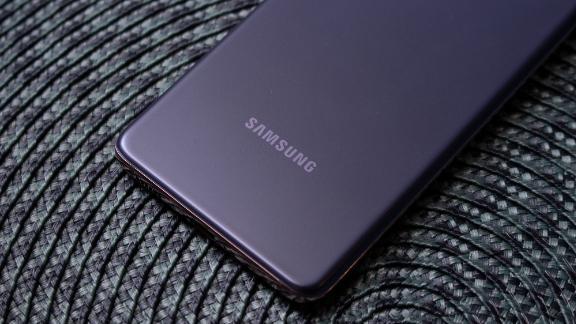
Samsung Galaxy S21 Ultra
PHOTO:
Jacob Krol/CNN
Like most flagship smartphones, every Galaxy S21 features a state-of-the-art processor from Qualcomm. Specifically for the S21, it’s the Snapdragon 888 processor paired with 8GB of RAM. It’s crafted on a 5-nanometer architecture and is the Android equivalent of the A14 Bionic inside the iPhone 12 family.
This setup makes Android 11 with Samsung’s One UX 3.1 truly fly. It all feels instant — the camera opens swiftly, for instance, and you can keep 20 applications open in the background while multitasking without any hesitations.
Over the previous Galaxy S20, everything feels more instantaneous. It’s only a hair faster than the Galaxy Note 20 Ultra, though. Camera processes and intense tasks is where this new processor really shines. Specifically, when shooting in night or portrait mode, you’ll find the S21 can quickly capture a moment and render out the final image in record time.
The S21 never balked when we used our typical apps, including Outlook, Gmail, Slack, Trello, Microsoft Teams, Twitter, Chrome, Instagram, TikTok, LinkedIn, Apple Music, Spotify, Google Home, SmartThings, Fortnite, Google Pay, Samsung Pay, Netflix, Hulu, Disney+ and GeekBench 5, among others. When playing “Real Racing,” we especially liked the adaptive refresh rate, which can scale to 120 Hz for a clean action-packed view when driving a car.
In comparison to previous Samsung interfaces, One UX 3.1 is less clunky and less gimmicky. There are still some annoyances — like out of the box, the Samsung Pay swipe-up is dangerously on top of the home button — but a big win is that the customized Bixby news screen is replaced by the standard Google one. It’s closer to a Pixel device in that sense and removes some clutter.
We’ve been testing an unlocked version of the Galaxy S21. There’s no carrier bloatware on it, but the AT&T, T-Mobile or Verizon locked version will feature plenty of preloaded apps. Out of the box, you can expect the normal Samsung apps like AR Zone, Galaxy Wearable, Health, Samsung Members and other core ones. A folder with Google and Microsoft apps is here as well.
The other big news is that Samsung is still guaranteeing three years of Android updates. And we have no doubts that this Snapdragon 888 processor will last until then and likely surpass it — just see the benchmarks below. Most importantly, though, it expands the life cycle of your smartphone.
As we do with every device we test at CNN Underscored, we ran the Galaxy S21 through a series of benchmarks. One standard is GeekBench 5, and this runs the phone through a series of tasks in a stress test formation. The Galaxy S21 scored a 1,110 on single and 3,477 on multi-core. That’s only slightly behind the S21 Ultra, which got a 1,122 on single and 3,489 on multi-core. It’s a set of scores that’s in line with our daily use and proves that the S21 carries a super-impressive amount of speed.
The S21 — which features a 4,000mAh battery — easily made it through a full day before needing to be recharged. Similar to our software benchmarks, we ran the Galaxy S21 through our battery test. In this, we loop a 4K video in the VLC with the device set to airplane mode and the brightness set to 50%. We unplug the device when it reaches 100% and let it run until the device powers off. The test is monitored by two cameras to ensure accuracy as well.
The Galaxy S21 lasted for 12 hours and 10 minutes, which surpasses the Galaxy Note 20 Ultra, which lasted 10 hours. The battery is impressive any way you try to slice it. And you can charge the phone in two key ways: via a plug, thanks to the USB-C port on the bottom, or via a Qi-enabled wireless charging pad on the back. When connected to power via hardwire, the Galaxy S21 can charge at 25 watts. You won’t get a plug in the box this time around, though — like Apple, Samsung is ditching the included accessory and requiring you to bring your own.
At $1,199, the S21 Ultra is a premium device that corrects the missteps of the S20, namely in the world of imaging. To deliver a crisper 100x Space Zoom, Samsung has increased the number of cameras to five. Aiding in processing times will be the top-class Qualcomm Snapdragon 888 processor, which is also tasked with powering this massive phone.
Design
The new design language of the 2021 Galaxy lineup is supersized on the Galaxy S21 Ultra. External storage is still gone here — the bottom of the S21 Ultra features a SIM card slot, USB-C port and speaker. The power and volume rocker are built into the metal frame on the right-hand side. And etched into the metal frame, which is color-matched to Phantom Black or Phantom Silver, are the antennas and microphones.
The S21 Ultra is massive. Those with small hands will need to use two, and even one large hand might leave you with an unwieldy feeling at times. Still, even with a size that amounts to half a pound, it doesn’t feel like a brick that’s top-heavy with the camera bump.
And unlike the S21, which opts for a plastic back, the S21 Ultra goes high-end with a matte glass back. It also does a remarkable job of hiding fingerprints on its Phantom Black surface. Samsung’s new color is really just a deep matte black, and while it is nice, we wish there were an option for a pop of color. The Ultra only comes in more timid colors, Phantom Black or Phantom Silver, though you can customize it depending on availability via Samsung directly.
But this more uniform design does its job well on the S21 Ultra. The black metal from the frame stretches to the large camera bump on the back, which houses five lenses, an autofocus sensor and an LED flash. All of this works to give a premium feeling to the S21 Ultra.
Display
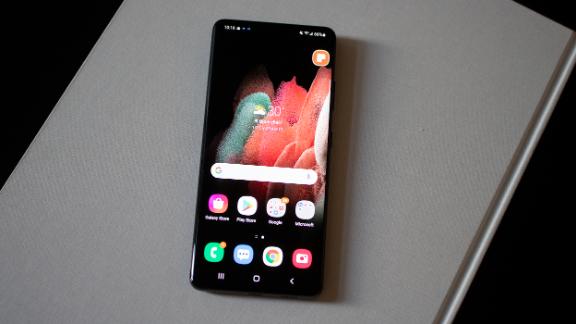
Samsung Galaxy S21 Ultra
PHOTO:
Jacob Krol/CNN
The 6.8-inch display on the S21 Ultra isn’t just bigger, it’s a WQHD+ AMOLED. It’s higher than HD (1080p) at 3200 x 1440 and delivers the sharpest picture possible. Within settings, though, you can tone it down to FHD+.
The refresh rate is also more impressive here compared to the S21, as it can get as low as 10 Hz and can scale to 120 Hz. That’s similar to how the refresh rate works on the Apple Watch Series 6 to show the minute hand moving. That lower Hz means the S21 Ultra can be even more efficient, and on a larger display, that’s important. Here’s the real kicker: On the S20 Ultra, you couldn’t run the display at WQHD+ and scale to 120 Hz refresh rate. Samsung’s fixed that here, and in our testing, it doesn’t destroy the battery life.
The display on the S21 Ultra is a key part of the phone: It’s the deeply immersive viewfinder for photography, video calling a loved one or taking in the latest film. In the full WQHD+ resolution with it set to vivid, colors really pop along with side dark points that immediately pull you into whatever’s on the screen.
And for the first time, the S Pen is arriving on a Galaxy S phone. It’s not as integrated as on the Galaxy Note, and after some testing we found it to be far from vital for the S21 Ultra. With a large 6.8-inch display that supports Wacom technology, it’s a great way to quickly jot down notes or scribble out a doodle. And if you’re coming from a Galaxy Note or Tab S7, you can use that same S Pen here. Samsung is also selling two cases that come bundled with an S Pen, or you can get a stand-alone stylus. You’ll have full access to Samsung Notes and the ability to write on the screen when it is locked for a quick note, and you can use it to control the user interface.
Cameras
The S20 Ultra’s camera experience was slow to process, delivered blurry results and had an autofocus problem. Samsung’s fixed a lot of this with the S21 Ultra. Let’s familiarize ourselves with the hardware on the back:
- A 12-megapixel ultrawide lens: This is the same 120-degree ultrawide lens as on the core S21. It lets you capture a whole lot more in just one shot without moving.
- A 108-megapixel wide lens: We found ourselves leaning on the default lens a lot more on the S21 Ultra. With a higher number of megapixels, along with a bigger lens, it captures more detail and keeps the clarity. By default, this will deliver those 108-megapixel images as 12-megapixel shots. It saves space and does so through a nona-binning process, essentially combining pixels to deliver a sharper image.
- Dual 10-megapixel telephoto lenses: This turned out to be a game changer. These are the lenses that accomplish 100x Space Zoom. Both of these lenses are 10 megapixels, but one has 3x optical (like on the S21) and the other has 10x optical. With a 10x physical zoom, you can capture a lot more details and reduce the noise in a shot.
- A laser autofocus sensor: This was first introduced on the Note 20 Ultra, and it’s here to improve focusing times. Additionally, it aims to reduce noise with zoom shots.
As we did above, we’re embedding a selection of photos below that were all captured on the S21 Ultra. With — count ‘em — a total of five lenses, it’s really a complete photography system.
The ultrawide is just as strong here as on the S21, allowing you to capture a wider shot that doesn’t sacrifice image quality. Capturing New York City with it, both indoors and outdoors, was quite enjoyable for us. By default, Scene Optimizer is turned on, and this is an example of Samsung’s AI at work. In some cases during our testing, it resulted in a darker image lacking color. Turning it off fixed the problem, but it’s not as simple as just pointing and shooting in that case.
The nona-binning technique of combining pixels to deliver a 12-megapixel image has improved year over year. For starters, the processing time is closer to just a second, even shorter with images captured during the day with plenty of light. Zooming in on these shots keeps details in a slightly more saturated image. You can also opt to shoot in full resolution at 108 megapixels.
Where things get really interesting is with 100x Space Zoom. And we’ll say it up front: If you’re expecting there to be somehow no graininess at 100x freehand, you’re going to be disappointed.
We have several shots captured from The Edge — a skydeck 100 stories above NYC — of the Statue of Liberty, the Empire State Building and the Freedom Tower. Safe to say, especially at 100x, it’s a blurry shot that keeps some details. The lenses also appeared to be struggling with lower-light conditions. It is very neat to say we got an up-close shot of the Statue of Liberty from several miles away, though. So, to a degree, it’s still a gimmick, and we don’t anticipate that you’ll be shooting at 100x all too often.
Truly the star of this setup is the telephoto lens that features a 10x optical lens. It’s really a game changer for mobile photography, and we desperately wish it were on the S21, S21+ and other phones on the market. It’s perfect for long-range shots and delivers a usable image — one that you’re proud to share across the internet. It’s also a better base for the 100x Space Zoom shots. With those, it’s a fusion between the 3x optical and the 10x optical, along with artificial intelligence and many rapid captures. It all comes together to deliver a blurry — yes, blurry — image captured at extreme zoom.
In our test shots without a significant amount of light, we saw a heavy amount of grain that blurred the image. And while some level of clarity missing is to be expected when shooting freehand at 100x zoom, we were just hoping for a bit more clarity. We’ve reached out to Samsung about the iffy performance with Space Zoom in low light but have yet to hear back.
The S21 Ultra has a tremendous amount of potential for photography. Single Take and improved scene detection will help you capture better shots no matter the lens. Portrait shots are also much improved, with better detection for hair and picking up where the focus should start or stop. Like the iPhone 12 family, you can pick from different portrait lighting, and Samsung goes a step further by letting you adjust the level of blur in real time.
And if you’re a fan of selfies, it’s good news across the board. For starters, when you first flip to the front-facing camera, a pop-up will ask if you want natural selfies. Samsung is no longer pushing smoothing your skin or enhancing your face with AI. The S21 Ultra ups the quality of the front-facing lens to 40 megapixels.
Performance
As we mentioned above, the S21 Ultra is powered by that same state-of-the-art processor as the Galaxy S21. The biggest difference is the amount of RAM (memory) paired with that processor. And as Samsung has done in the past, the brand is packing even more RAM into the highest-end smartphone. It gives it a runway for intense tasks — think massive games and creative tasks like photo or video editing. It’s also enough to power five cameras on the back and the larger 6.8-inch display.
Opting for 128GB or 256GB of internal storage will mean 12GB of RAM inside. The largest 512GB variant of the S21 Ultra features a whopping 16GB of RAM, which is basically unheard of for smartphones.
Despite us testing that higher-RAM model, our experience on the S21 Ultra in comparison to the S21 was nearly identical. As we anticipated, it’s not so much the RAM that factors into everyday use, but it’s really all about the efficiency and power that the Snapdragon 888 processor can deliver. Sure, processing an image might have been a hop faster, but nothing really noteworthy. And that’s really good news, as you shouldn’t need to get the most expensive model with a giant screen to get the best performance — especially if you want a smaller phone.
The Snapdragon 888 on the S21 Ultra specifically fixes the slow processing time from the camera. It has plenty of cores inside to handle shooting with five lenses, stitching pixels together with nona-binning and the ability to add in light when it’s not there for Night mode shots. It’s really the processor that Samsung needed to beat the Note 20 Ultra, deliver a compelling experience over the S20 and try to steal users from the iPhone world.
Android 11 with Samsung’s One UX 3.1 really just flies on the Ultra in the same way it does on the core S21. It’s instant with every finger swipe.
As we do with every device we test at CNN Underscored, we ran the S21 Ultra through a series of benchmarks. One standard is GeekBench 5, and this runs the phone through a series of tasks in a stress test formation. The S21 Ultra got a 1,122 on single and 3,489 on multi-core. It’s a set of scores that’s in line with our daily use and gives this $1,299 smartphone a slight edge over the $799 S21.
The S21 Ultra — yes, even with the display set to WQHD+ – easily made it through a full day. It features a massive 5,000mAh battery. We trace this impressive battery life back to the processor’s efficiency, the ability to dynamically adjust the refresh rate and software optimizations.
Similar to our software benchmarks, we ran the Galaxy S21 Ultra through our battery test. In this, we loop a 4K video in the VLC with the device set to airplane mode and the brightness set to 50%. We unplug the device when it reaches 100% and let it run until the device powers off. The test is monitored by two cameras to ensure accuracy as well.
The S21 Ultra lasted a total of 15 hours and 57 minutes. Like the S21, the S21 Ultra supports up to 25-watt fast charging via the USB-C port. And you need to bring your own wall plug, as Samsung is no longer including one in the box. The S21 Ultra also supports Qi-enabled wireless charging.
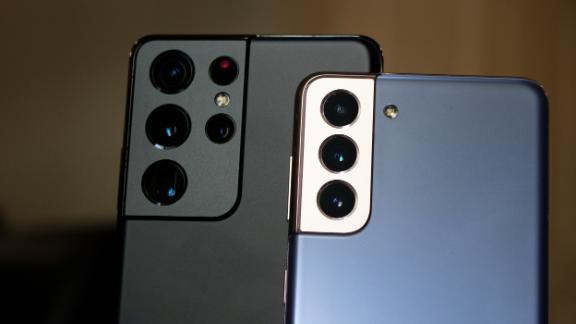
Samsung Galaxy S21 Ultra
PHOTO:
Jacob Krol/CNN
As we did with our iPhone 12 reviews last fall and our Galaxy S20 reviews last spring, we hunted down 5G. Out of the box, the S21 and S21 Ultra come equipped with Sub-6 and mmWave bands for connecting to low-band and ultra-wideband 5G networks. The latter is the 5G you’ve been promised, with upload and download speeds that zoom past your home Wi-Fi.
Low-band is the one that’s more available here in the United States and is similar to 4G LTE. Don’t expect 2,000 Mbps down with this, but closer to 200 Mbps when it’s fast. Low-band is all about more room on the network for a plethora of devices to connect simultaneously. As 5G devices become more common, this will help reduce congestion. Low-band is easier to roll out and less of a finicky technology. You don’t need to be directly in line of sight with a 5G tower, and you’ll see it in more wireless markets from AT&T and Verizon.
In our week of testing, we headed to supposed 5G ultra-wideband sites across New Jersey and New York City. When we could see a Verizon 5G cell site and had our S21 or S21 Ultra pointed at it — with nothing blocking it — we could hit download speeds of up to 2,000 Mbps. Neither device got warm, though we did see the battery trickle down after several tests. It was similar to our iPhone 12 testing, as walking down the street or taking a few side steps resulted in us losing the ultra-wideband connection.
As 5G gets more mainstream, and the networks are rolled out, the experience should get better. We hope the technology behind ultra-wideband or mmWave will mature as well. For now, if you’re in a market with either band of 5G, you’re in for a treat. But also don’t be disappointed if you aren’t; opting for an S21 or S21 Ultra will be a method of future-proofing.
The S21 and S21 Ultra also carry the other crucial forms of connectivity: Wi-Fi 6E, Bluetooth 5.0/LE and, notably, ultra-wideband. Don’t be concerned with 6E on the back of Wi-Fi; it’s the latest standard and acts as a form of future-proofing. We’re starting to see the first routers with Wi-Fi 6E starting to ship, and chances are it will take some time before you adopt it. Bluetooth is handy for earbuds, headphones and a plethora of accessories. Ultra-wideband doesn’t have a ton of use right now, but it can be helpful for location and tracking.
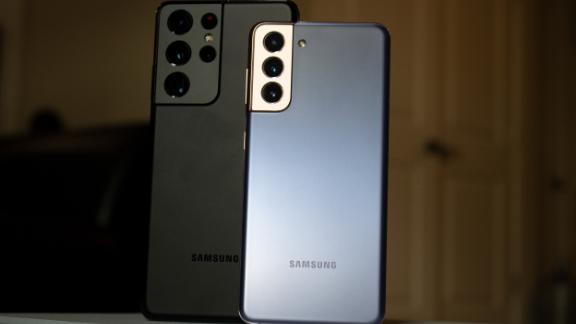
Samsung got a lot right this year. With the S21 Ultra, the company righted the ship. We’re still declaring that the $1,199 Ultra has a massive display, state-of-the-art processor with more RAM than most people need and six cameras in total, among other features. It’s really an ultra-premium smartphone that can best the Note 20 Ultra and compete with the iPhone 12 Pro Max.
If you don’t want a massive display or want to spend less, the Galaxy S21 is a terrific option. For $799, it delivers a versatile set of cameras, all-day battery life, the same zippy processor and a great display. It’s currently our favorite Android phone on the market. And if you want a slightly bigger experience, look at the $999 Galaxy S21+.
The bars have been set — now let’s see how other brands compete and what Samsung will deliver later in 2021. The Galaxy S21, S21+ and S21 Ultra are all up for preorder and will launch on January 29.
Shared From Source link Breaking News
